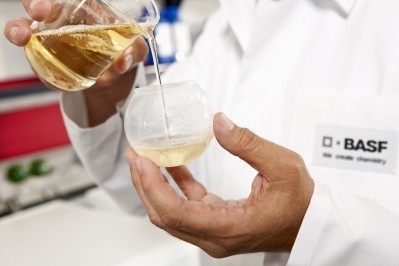BASF works to achieve net zero carbon emissions by 2050

Carbon management is a pillar of most ingredient manufacturers strategies towards more environmentally sustainable production processes. Chemical manufacturer BASF has taken a leading role in managing carbon emissions throughout the company and is diligently working to better adhere to the principles of environmental sustainability.
To learn more about how BASF is working to implement carbon management and procedures within its own supply chain and throughout ingredient production processes, including the launch of a digital application tool to calculate Product Carbon Footprints for its 45,000 sales products, CosmeticsDesign spoke with Prerna Chatterjee, Senior Sustainability Manager at BASF for her insights.
The importance of carbon management
Within the cosmetics and personal care industries, carbon management in support of environmentally sustainable practice implementation is essential, Chatterjee asserted. The practice can “have a significant impact on the environment, as a large portion of the manufacturer’s carbon footprint is attributed to Scope 3 emissions, which are not produced by the company itself, but by those that it's indirectly responsible for, up and down its value chain,” she said.
This underscores the imperative relevance of carbon management to industry stakeholders, because “as suppliers to the beauty industry we engage in strategies & implementation techniques that reduce the overall carbon footprint of our activities & products,” she shared.
Further, carbon management matters a great deal to the consumer or product’s end-user. It is well understood that “with transparency and traceability on the rise, consumers are seeking more information about ‘how’ their product is being produced,” she explained. Now more than ever, consumers understand their role in supporting environmentally sustainable practices through their purchasing power by “driving demand for more sustainable products and influencing industry.”
This influence can be exerted “by choosing to purchase products that use sustainable sourced ingredients to help reduce the carbon footprint of the cosmetic and beauty industry, which can also encourage manufacturers to prioritize sustainability and work towards reducing the footprint,” she added. Ultimately, “consumers have an important role to play in driving sustainability in the beauty and cosmetics industry, and being aware about companies’ carbon management practices is one aspect of this,” she continued.
Challenges to carbon management implementation
Unfortunately, the implementation process of carbon management practices is necessarily simple, and there are many challenges that ingredients manufacturers and suppliers face when approaching this process. First and foremost, “the personal care industry has a complex and global supply chain, which can make it difficult to trace and calculate the exact carbon footprint of products,” Chatterjee explained.
Additionally, “some sustainable materials/feedstocks are often not widely available, which can impact on our ability to make big impacts” and add to the potential challenges, she shared. Further impacting the feasibility of some carbon management solutions is that “communicating about sustainability initiatives and progress can be challenging, requiring a high level of accountability and transparency,” she explained.
As a solution to directly address these issues, “companies must be able to clearly communicate the sustainability benefits of their products and ingredients, as well as their overall carbon management strategies to consumers and stakeholders,” she offered.
Ultimately, overcoming these challenges to carbon management implementation requires a “collaborative effort from companies, suppliers, regulators, and consumers to develop more sustainable and transparent practices in the personal care industry” with successful outcomes.
Carbon management at BASF
Despite these challenges, as a global entity BASF recognizes its responsibility for climate protection and has committed to further reducing emissions from its production processes. To achieve its goals, the company has set some ambitious quantitative objectives to measure progress.
“At the heart of the long-term transition towards our net zero CO2 emissions goal by 2050 is the use of new technologies, which will replace fossil fuels such as natural gas with electricity from renewable sources,” Chatterjee shared. While “most of these technologies are being pioneered by BASF in collaboration with partners and are currently in a pilot stage,” the company “continues to systematically implement continuous improvement processes for existing production plants” to accelerate the timeline for successful implementation of its carbon management practices, she explained.
Further, “BASF has developed a digital application tool to calculate the cradle-to-gate PCFs (Product Carbon Footprints) for its 45,000 sales products, which enables the company to provide PCFs for its global portfolio,” she added. This affords BASF customers the ability to “receive valuable information about the extent to which BASF materials contribute to the carbon footprint of their business activities and their own final products.”
Based on GHG emissions from BASF plant, coupled with “high-quality average data for purchased raw materials as well as purchased energy,” BASF’s PCF calculations “comprise all product-related greenhouse gas emissions that occur until the BASF product leaves the factory gate for the customer: from the purchased raw material to the use of energy in production processes,” she said.
Through the combination of technological innovation and PCF data, BASF is well on its way to achieving its goal of net zero CO2 emissions by 2050. As BASF is setting an industry example through its practices, it will be interesting to see if other global leaders in chemical production will follow suit with their own carbon management programs in the coming months.






















